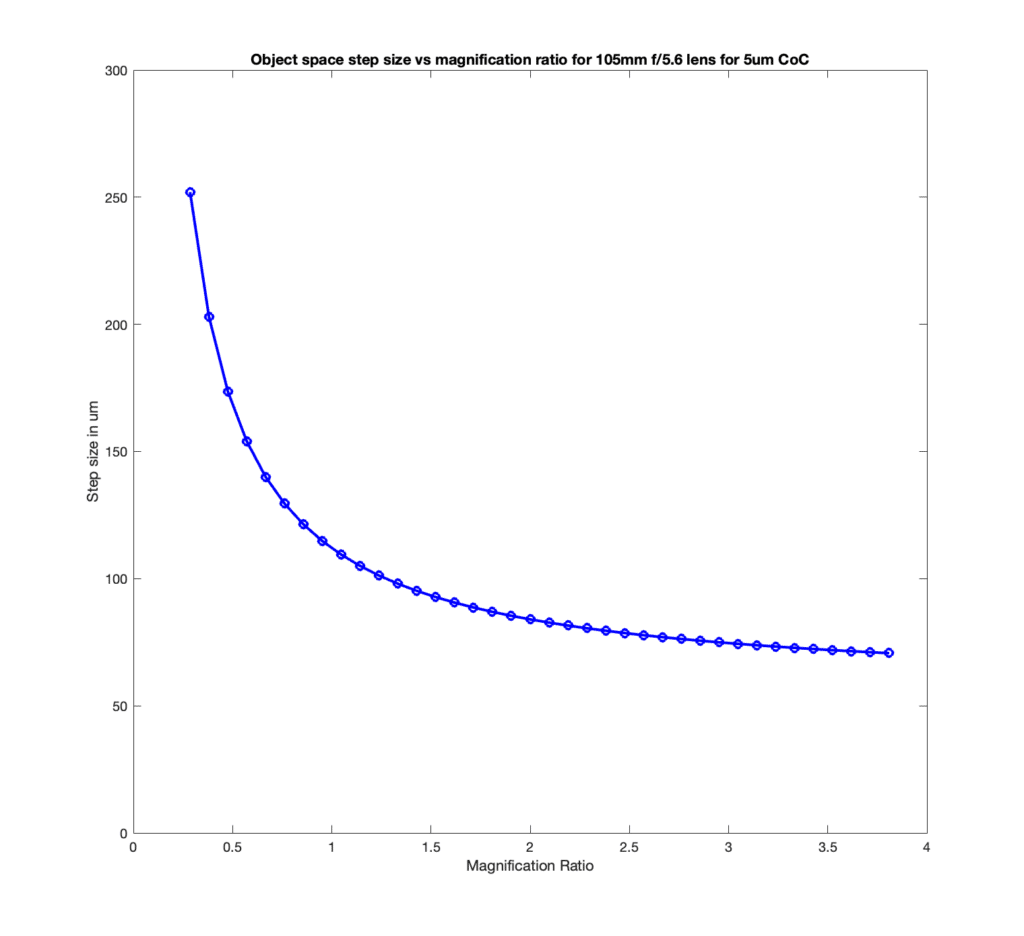I’ve done a lot of work on how to set up the step sizes when you’re using the focus bracketing features built into the GFX cameras.
https://www.lensrentals.com/blog/2023/02/how-your-cameras-focus-bracketing-system-works/
Now I’m doing macro work at greater than 1:1 magnification, and I need to do something similar so I can pick step sizes when using my Cognisys rail.
I created this graph:
View: original size
You will note that the right step size is fairly insensitive to magnification about a magnification ratio of about 1.5:1. Why is this? It’s because the effective f-stop is varying with magnification.
This is for the Rodenstock 105mm f/5.6 HR Macro Digaron that I’m using wide open.
I’d appreciate it if some mathematically inclined person would check my numbers.

Hi, is there a camera with a feature where you place the focus on the front and back of the subject and let the camera compute the step size and number of pictures needed to be in focus?
I thought that would be the logical setting to make as the camera would already have in addition – the focal length, aperture, etc. That would take the guesswork out of changing step size & number of pictures needed for any given subject distance, aperture & focal length. Thanks.
The GFX cameras can work like that in focus bracketing mode.